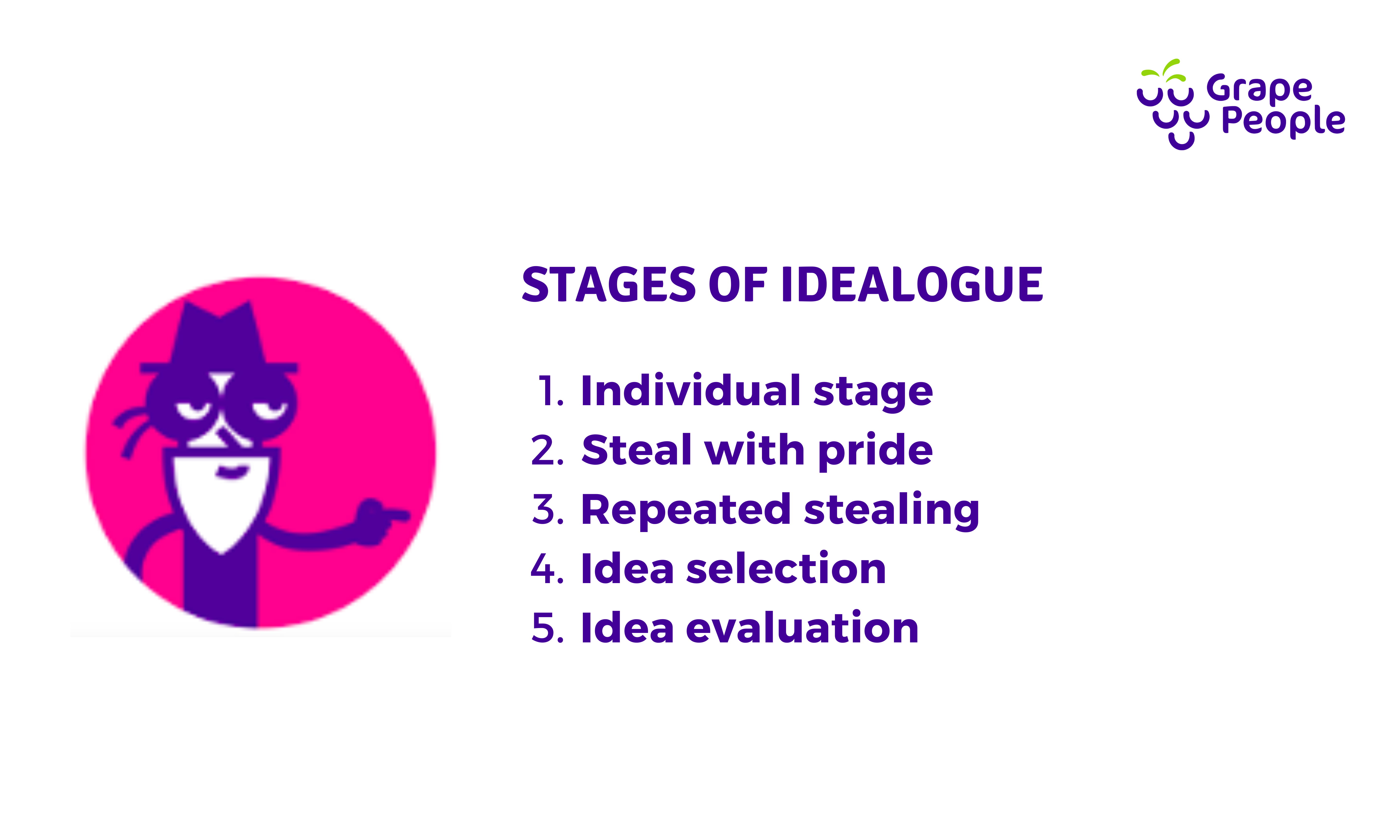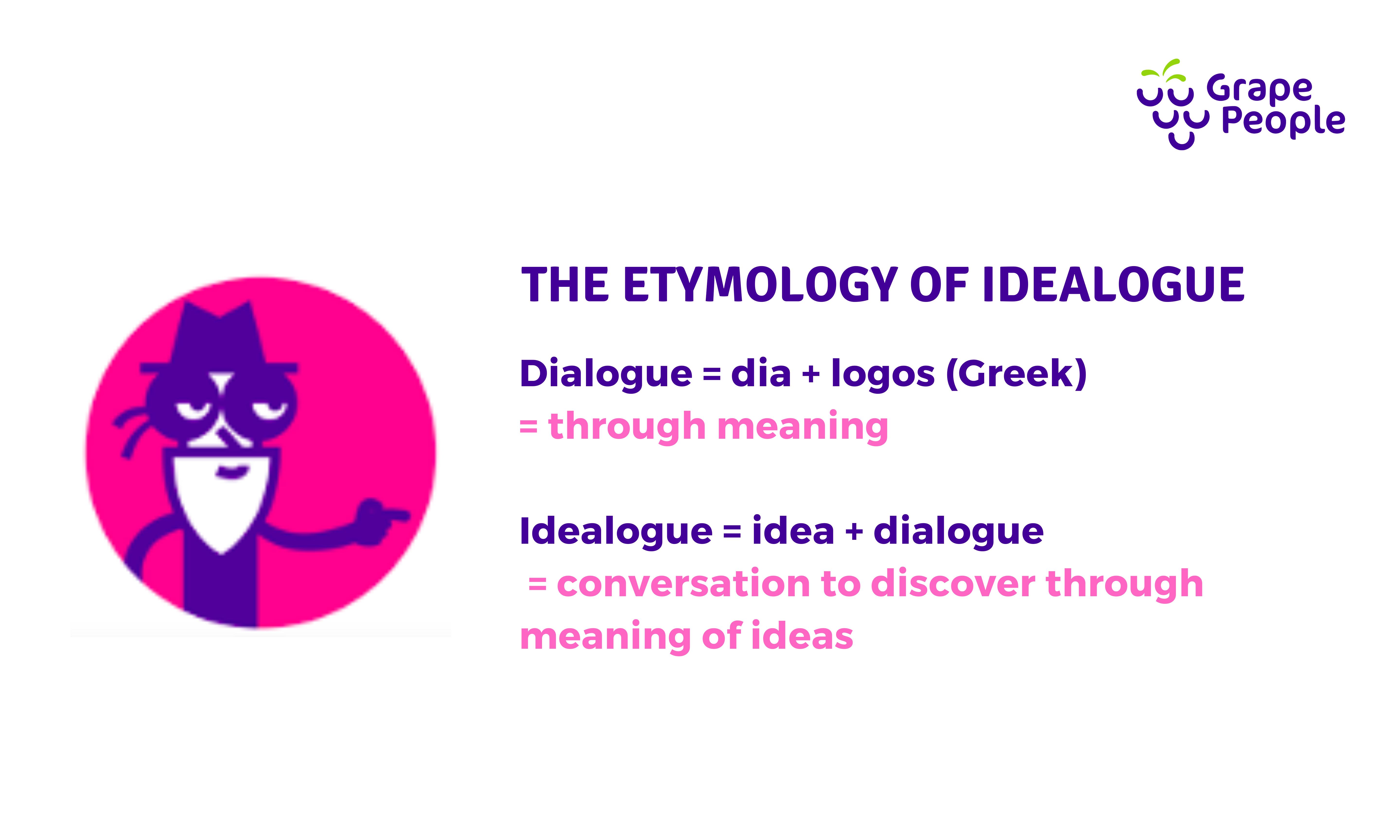Spark of Inspiration: The Idealogue Method

Have you ever come up with a brilliant idea? The feeling is pretty amazing. On the other hand, have you ever shared a terrible idea with a friend? Perhaps you tried explaining an underwhelming idea to a room full of colleagues. It’s discouraging, to say the least. Whether they are bad, good, or mediocre, ideas are powerful! A good idea can start a movement or be a catalyst for change. A bad idea has the power to lead a person, an organization or even entire nations down the wrong path. Ideas inspire us to think and motivate us to take action.
Group creativity tools are commonly used to help people come up with good ideas. Brainstorming is a group creativity tool that has been around since the 1940s. The belief that made brainstorming so popular is that people are more creative in groups than they are individually. Brainstorming encourages people to think of as many ideas as possible while withholding criticism. The methodology behind brainstorming helps groups come up with lots of ideas in a short amount of time. Unfortunately, ideas on their own are worthless. You could spend all day telling everyone your best ideas, but there is no point unless people can understand your ideas and determine if they are good or not. Brainstorming and other popular group tools fail at getting people to understand and select the best ideas of the bunch. This is a major problem. Thankfully, there is a solution to the shortcomings of brainstorming. The solution is Idealogue. When a facilitator uses Idealogue, people don’t simply create ideas, but they also understand, agree with, and remember the new ideas and content created during the session. With Idealogue, a workshop ends with the whole group reaching an agreement about what the best ideas are.
A critical part of traditional brainstorming methods is the rule not to criticize any ideas that are proposed. This rule makes sense, right? After all, it doesn’t feel good to share an idea only to have it be torn apart by everyone else. While this rule has some value (creating a safe and supporting atmosphere), it limits the power of the group. If an idea can’t be criticized, how can it be improved? If all ideas are accepted as good, then how does one separate worthwhile ideas from those that belong in the trash heap? No one wants to face criticism when they share an idea, but without a chance to criticize an idea, it is impossible to judge its content and tell a good idea from a bad one. In other words, in the quest to develop impactful, life-changing ideas, criticism is essential! Idealogue takes this to heart. An important rule of the Idealogue method is to steal with pride. This rule requires you to listen to what other people have to say and then decide for yourself if their ideas are worth stealing or not. This is how bad or mediocre ideas are filtered out during the Idealogue method, leaving only the best ideas.

The Idealogue method always uses the same five steps performed in the same order. The first stage is the individual stage, where the topic of the day is given to the group by the meeting leader, and everyone is given a few moments to write down their thoughts.
The second stage is group formation, and it is here where people begin to steal ideas from one another. The larger group is broken down into smaller groups of three or four, and people have a few minutes to listen to one another and steal the ideas they like. In a typical Idealogue session, there are three or four rounds of sharing in small groups. This is the third stage, repeated small group work.
Then it is time for the fourth stage, ideas selection. People remain in small groups and decide together what the best ideas are. Once a small group has agreed on what the best ideas are, the ideas are written down on a piece of paper and posted at the front of the room where everyone can see.
Idealogue ends with the final stage, ideas evaluation. All of the participants join together as one large group, and the meeting leader summarizes the ideas posted at the front of the room and answers questions that people have about the ideas.
This five-stage structure is effective because it makes Idealogue both an individual and a group activity. People have to share with others making it a group task, but everyone is evaluating the ideas on their own, trying to steal the best ones for themselves. As people share with one another, new ideas are formed, and the ideas improve. With everyone thinking critically about ideas when trying to steal with pride, only good ideas get stolen. This means that by the end of an Idealogue session, there is usually a consensus among the group about the best ideas.
The name Idealogue is formed by combining the words “idea” with “dialogue”, and the heart of the method is to create meaning through ideas. Idealogue is adaptable and versatile, and it can be used in many different situations.

Besides helping people create and understand new ideas, Idealogue can introduce a new strategy, action plan, or company policy, and it helps groups generate the best course of action together. Idealogue is also useful in assisting groups in understanding and accepting decisions that were made by others like a boss or upper management. Idealogue is also suitable to use as either an emergent or convergent tool. It can help groups create many different ideas (emergence), or it can be used to help select the best ideas (convergence).
The Idealogue method is backed by little secrets that help create enthusiastic conversations and alignment around the best ideas. First, the method is driven by individualism. When you’re told to collect the best ideas on your own piece of paper for yourself, you have a clear task. Second, in order to steal the best ideas, you need to take the time to understand them first. You can’t pretend to listen or zone out. You need to consider the thinking behind the idea and how it fits within the larger context. Third, Idealogue has people working in groups of three. This is an ideal group size for discussions. In pairs, the dynamics do not always work, as one person can dominate the conversation. And groups of four are large enough where introverts can begin to hide and keep quiet. And finally, the repeated rounds of stealing in Idealogue mean that the best ideas will spread throughout the group and there will be alignment.
If you find that brainstorming falls short in helping people produce meaningful and long-lasting ideas, give Idealogue a try! It is a tool worth stealing! Read more about Idealogue and how to use it in Pepe Nummi’s book Beyond brainstorming (2016) >>
If you wish to learn more about these topics,
check out our upcoming WEBINAR and TRAINING >>
⭐ Learn more about Breakthrough Decision Making >> ⭐
About the trainer:
Pepe Nummi is a trailblazer of facilitation and an author in Finland. He is the first certified professional facilitator in the country and one of the founders of Grape People – Finland’s first company focusing on facilitation. Over the course of his long career, he has trained over 15,000 people in more than 20 different countries.
Get to know Pepe: LinkedIn | Twitter
Feel free to reach out in case you would like a tailored training
for your team or organization: [email protected].
We are more than happy to help you!




